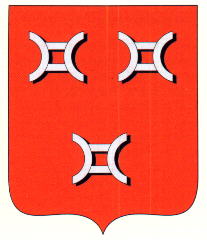Œuf-en-Ternois: Difference between revisions
Jump to navigation
Jump to search
Knorrepoes (talk | contribs) m (Text replace - "{|width="100%" style="color:black; background-color:#ffffcc;" |width="15%"|50 px|left |width="70%" align="center" |'''Heraldry of the World<br/>Civic heraldry of France - Armorial de France''' |width="15%"|[[Fil) |
Knorrepoes (talk | contribs) m (Text replacement - ".jpg|center]] ====Origin/meaning====" to ".jpg|center|Armoiries de {{PAGENAME}}]] ====Official blazon==== ====Origin/meaning====") |
||
| Line 3: | Line 3: | ||
Département : [[Pas-de-Calais]] | Département : [[Pas-de-Calais]] | ||
[[File:oeuf.jpg|center]] | [[File:oeuf.jpg|center|Armoiries de {{PAGENAME}}]] | ||
====Official blazon==== | |||
====Origin/meaning==== | ====Origin/meaning==== | ||
The arms were proposed in 1994, but I have no idea whether the municipality actually adopted the arms. | The arms were proposed in 1994, but I have no idea whether the municipality actually adopted the arms. | ||
Revision as of 17:25, 21 January 2016
Template:FranceOEUF-EN-TERNOIS
Département : Pas-de-Calais
Official blazon
Origin/meaning
The arms were proposed in 1994, but I have no idea whether the municipality actually adopted the arms.
The arms show the arms of the Wllart family in reversed colours. The arms show three anilles, or mill-irons. The Wllart family was one of the many families who held the estate of Oeuf, and owned the estate for more than a century until 1766. During this time the Lords of Oeuf were promoted to Marquises of Oeuf and hence their arms were chosen as the most representative for all families that ruled Oeuf.
Literature : Bouchet et al, 1994
